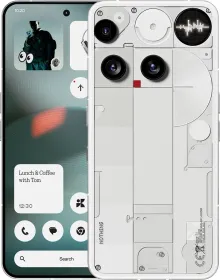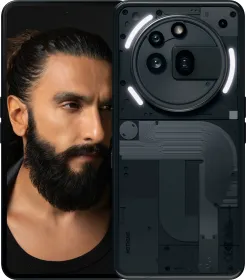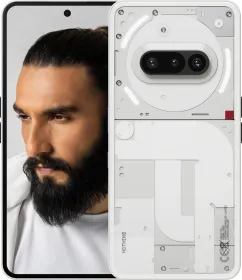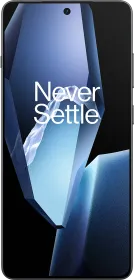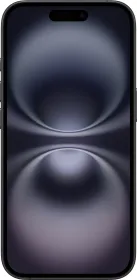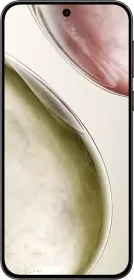Now that it has been some time since the launch of the Phone (3), and we’ve had sufficient time to compile the necessary information for this article, we present to you one of the most informative and comprehensive comparisons between Nothing’s latest smartphone and its competitors.
Thanks to its premium pricing, the Phone (3) ends up in direct competition with the vivo X200, the Find X8, Galaxy S25, Xiaomi 15, Pixel 9, and the iPhone 16. We’ve mentioned the key specifications of the handsets, followed by a breakdown of the numbers.
While the reviews for all the phones are hyperlinked to their names at the top of the table, their SmartPrix price tracker (which lists the lowest price at which the device is available across the internet) is attached to their pricing.
Nothing Phone (3) vs. Competition: Key Specifications
| Nothing Phone (3) | vivo X200 | Oppo Find X8 | iPhone 16 | Galaxy S25 | Pixel 9 | Xiaomi 15 | |
| Dimensions | 160.6 x 75.6 x 9 mm | 160.3 x 74.8 x 8 mm | 157.4 x 74.3 x 7.9 mm | 147.6 x 71.6 x 7.8 mm | 146.9 x 70.5 x 7.2 mm | 152.8 x 72 x 8.5 mm | 52.3 x 71.2 x 8.08 mm |
| Weight | 218 grams | 197, 202 grams | 193 grams | 170 grams | 162 grams | 198 grams | 191 grams |
| Colors | White, Black | Natural Green, Cosmos Black | Space Black, Star Gray | Black, White, Pink, Teal, Ultramarine | Icy Blue, Mint, Navy, Silver Shadow, Pink Gold, Coral Red, Blue Black | Obsidian, Porcelain, Wintergreen, Peony | Green, Black, White |
| IP Rating | IP68 | IP68/IP69 | IP68/IP69 | IP68 (6m up to 30 minutes) | IP68 (1.5m up to 30 minutes) | IP68 | IP68 |
| Display | 6.67-inch 120Hz | 6.67-inch 120Hz | 6.59-inch 120Hz | 6.1-inch 60Hz | 6.2-inch 120Hz | 6.3-inch 120Hz | 6.36-inch 120Hz |
| Panel Technology | OLED LTPS | AMOLED LTPS | AMOLED LTPS | OLED LTPS | AMOLED LTPO | AMOLED LTPS | AMOLED LTPO |
| Peak Brightness | 4500 nits (peak) | 4500 nits (peak) | 4500 nits (peak) | 2,000 nits (peak) | 2,600 nits (peak) | 2,700 nits (peak) | 3200 nits (peak) |
| Pixel Density | 460 ppi | 460 ppi | 460 ppi | 460 ppi | 416 ppi | 422 ppi | 460 ppi |
| Processor | Snapdragon 8s Gen 4 (4nm) | Mediatek Dimensity 9400 (3 nm) | Mediatek Dimensity 9400 (3 nm) | Apple A18 (3nm) | Snapdragon 8 Elite (3nm) | Google Tensor G4 (4nm) | Snapdragon 8 Elite (3nm) |
| Peak Clock Speed | 3.21 GHz | 3.63 GHz | 3.63 GHz | 4.04 GHz | 4.47 GHz | 3.1 GHz | 4.32 GHz |
| GPU | Adreno 825 | Immortalis-G925 | Immortalis-G925 | Apple GPU | Adreno 830 | Mali-G715 MC7 | Adreno 830 |
| RAM Type | Up to 16GB of LPDDR5X | Up to 16GB of LPDDR5X | Up to 16GB of LPDDR5X | 8GB of RAM | 12GB of RAM LPDDR5X | 12GB of LPDDR5X RAM | 12GB of LPDDR5X |
| Storage Type | Up to 512GB UFS 4.0 | Up to 512GB of UFS 4.0 | Up to 512GB of UFS 4.0 | Up to 512GB NVMe | Up to 512GB of UFS 4.0 | 256GB of UFS 3.1 | 512GB of UFS 4.0 |
| Operating System | NOTHING OS 3.5 | FuntouchOS 15 | ColorOS 15.0 | iOS 18 | One UI 7 | Android 15 | HyperOS 2.0 |
| OS Support | 5 years | 4 years | 4 years | ~ 5 years | 7 year | 7 year | 4 year |
| Security Support | 7 years | 4 years | 5 years | ~ 5 years | 7 year | 7 year | 6 year |
| Primary Camera | 50MP (f/1.7, OIS), 1/1.3″ | 50MP (f/1.6, OIS), 1/1.56″ | 50MP (f/1.8, OIS), 1/1.56″ | 48MP (f/1.6, OIS), 1/1.56″ | 50MP (f/1.8, OIS), 1/1.56″ | 50MP (f/1.7, OIS), 1/1.31″ | 50MP (f/1.6, OIS), 1/1.31″ |
| Secondary Camera | 50MP (f/2.7, OIS), 1/2.75″, periscope telephoto 3x optical zoom | 50MP (f/2.6, OIS), 1/1.95″, periscope telephoto 3x optical zoom | 50MP (f/2.6, OIS), 1/1.95″, periscope telephoto 3x optical zoom | – | 10MP (f/2.4, OIS), 1/3.94″, 3x optical zoom lens | – | 50MP (f/2.0, OIS), 1/2.76″, 2.6x telephoto zoom lens |
| Tertiary Camera | 50MP (f/2.2, 114˚), 1/2.76″ ultrawide sensor | 50MP (f/2.0, 119°), 1/2.76″ ultrawide sensor, AF | 50MP (f/2.0, 120°), 1/2.75″ ultrawide sensor, AF | 12MP (f/2.2, 120°) ultrawide sensor with AF | 12MP (f/2.2. 120°), 1/2.55″ | 48MP (f/1.7, 123°), 1/2.55″ ultrawide camera | 50MP (f/2.2, 115°), 1/2.76″, ultrawide sensor |
| Selfie Camera | 50MP (f/2.2), 1/2.76″ | 32MP (f/2.0) | 32MP (f/2.4) | 12MP (f/1.9), 1/3.6″ | 12MP (f/2.2), 1/3.2″ | 10.5MP (f/2.2), 1/3.1″, PDAF | 32MP (f/2.0), 1/3.14″ |
| Battery Capacity | 5,500 mAh Si/C | 5,800 mAh Si/C | 5,630 mAh Si/C | 3,561 mAh | 4,000 mAh | 4,700 mAh | 5,240 mAh |
| Charging Speed | 65W wired, 15W wireless | 90W wired | 80W wired, 50W wireless | 25W wired, 25W wireless | 25W wired, 15W wireless | 27W wired, 15W wireless | 90W wired, 50W wireless |
| Connectivity Options | W-Fi 7, Bluetooth v6.0, dual-band GPS, NFC, USB Type-C 2.0 | Wi-Fi 7, Bluetooth v5.4, dual-band GPS, NFC, IR Blaster, USB Type-C 2.0 | Wi-Fi 7, Bluetooth v5.4, dual-band GPS, NFC, IR Blaster, USB Type-C 3.0 | Wi-Fi 7, Bluetooth v5.3, GPS, NFC, USB Type-C 2.0 | Wi-Fi 7, Bluetooth v5.4, GPS, NFC, USB Type-C 3.2 | Wi-Fi 7, Bluetooth v5.3, dual-band GPS, NFC, USB Type-C 3.2 | Wi-Fi 6, Bluetooth v6.0, dual-band GPS, NFC, USB Type-C 3.2 |
| Starting Price | Rs. 79,999 (for the 256GB variant) | Rs. 65,999 (for the 256GB variant) | Rs. 69,999 (for the 256GB variant) | Rs. 79,999 (for the 128GB variant) | Rs. 74,999 (for the 128GB variant) | Rs. 74,999 (for the 256GB variant) | Rs. 64,999 (for the 512GB variant) |
Also Check: Nothing Phone (3) vs. vivo X200 vs. Oppo Find X8 vs. Apple iPhone 16: The SmartPrix Comparison Tool Analysis
Nothing Phone (3) vs. Competition: Key Takeaways
Among the phones in this comparison, the Phone (3) and the vivo X200 have a similar screen size, and therefore, share a similar form factor. But even so, the Phone (3) is noticeably heavier.
The Find X8 is the only handset with a 6.59-inch screen, making it slightly larger than the compact flagship segment but smaller than the full-fledged mobile tablet territory.
The Xiaomi 15 and the Pixel 9 come with 6.36-inch and 6.3-inch screens (respectively), followed by the Galaxy S25 (6.2-inch), and the iPhone 16 (6.1-inch). Now that we’ve established that all the phones have a different form factor, let’s move ahead.
Design



- Between the Phone (3) and the vivo X200, the latter is lighter (despite having similar dimensions). The same is true when it comes to thickness. Among the other phones, the Galaxy S25 is the slimmest and the lightest (despite being bigger than the iPhone 16).
- While the Phone (3) is available in just two colors, the Galaxy S25 is available in seven colors, and the iPhone 16 is available in five colors.
- When it comes to water resistance, the vivo X200 and the Oppo Find X8 feature an IP69 rating, while all the other phones carry an IP68 rating.



- The Nothing Phone (3) is undoubtedly the most uniquely designed handset among all. If you keep all the smartphones on the tablet, the Phone (3) will be the first one to catch your eye, and that is what it does every single time, without failure. The placement of the external cameras may look a bit odd to some users, but for those who prefer it, along with the Glyph Matrix LED screen and the transparent back cover, there’s no other handset on the market that offers such a unique feature.
Display



- The Phone (3) features an LTPS OLED panel, which can’t lower the refresh rate below 60Hz. Besides, the X200, Find X8, Pixel 9, and the iPhone 16 also feature an LTPS panel. On the other hand, the Galaxy S25 and the Xiaomi 15 feature an LTPO panel (allowing the panel to lower the refresh rate below 60Hz and making functions like always-on screen more power efficient).
- In terms of brightness, the Phone (3)’s display can achieve a peak brightness of 4,500 nits, the same as the vivo X200 and the Oppo Find X8. The three phones are followed by the Xiaomi 15 (3,200 nits) and the Pixel 9 (2,700 nits).
- The Phone (3) also maintains a similar pixel density (460 ppi) as the other flagships, except the Pixel 9 (422 ppi) and the Galaxy S25 (416 ppi).
Processor



- The Phone (3) runs on the Snapdragon 8s Gen 4 (4nm), which offers more than enough power for regular users who do a little of everything (scrolling through social media, recording videos, playing games, editing content, etc.) on their smartphone. However, it remains the 10th most powerful chipset on Nanoreview’s Smartphone Processors Ranking (2025).
- While the list is topped by the Dimensity 9400+ (3nm) chipset, the Dimensity 9400 (3nm) — which powers the vivo X200 and the Oppo Find X8 — comes in second. The MediaTek chipset is followed by the Snapdragon 8 Elite (3nm) on the Galaxy S25 and the Xiaomi 15. Apple’s A18 chip (on the iPhone 16) secures the sixth position.

- As mentioned earlier, the Phone (3) is no slouch for regular tasks performed on a smartphone, and a couple of demanding tasks, but the Dimensity 9400, Snapdragon 8 Elite, and the A18 can complete those tasks faster while maintaining higher power efficiency. So, when it comes to raw processing and graphical power, the Phone (3) runs behind its competition, except for the Pixel 9.
- While all the handsets in the comparison utilize LPDDR5X RAM (except the iPhone 16), they also rely on UFS 4.0 storage (except the iPhone 16, which uses NVMe storage, and the Pixel 9, which uses UFS 3.1 storage). All the phones are available with up to 512GB of storage, except the Pixel 9 (it maxes out at 256GB).
Operating System



All the handsets run on their respective operating systems (or custom user interfaces for most of them), and comparing all of them will be beyond the scope of this article.
I’ll still tell you the fundamental differences. The Pixel 9, for instance, ships with stock Android out of the box, exactly how Google intended the operating system to be. It features a couple of AI-based tools, including Pixel Screenshots, Pixel Studio, and the deep integration of the Gemini AI assistant.
All the other user interfaces you find on the Phone (3)’s rivals are based on Google’s Android 16, but they each have some unique features. Nothing OS 3.5 offers features like Essential Space, Flip to Record, Essential Search, a monochrome UI mode, and customizable icon packs. Further, it also powers the Glyph Matrix LED display at the back of the phone.



- Funtouch OS 15, for example, comes with a Lightning-speed Engine that claims to improve app startup speed and an Ultra Game Mode.
- ColorOS 15 features the Luminous Rendering engine, which delivers realistic animations and smooth transitions, along with the Trinity Engine that optimizes resource management.
- Samsung’s One UI 7 offers the most comprehensive suite of AI features, including additional features like Now Brief and Now Bar.
- HyperOS 2.0 offers the HyperConnect unified ecosystem for Xiaomi devices, including phones, tablets, smart home items, etc., along with a lighter file system.
Apple’s iOS 18 offers a completely different user interface, including elements like the Control Center and App Library, along with numerous customization options (the most for an iOS version), as well as several AI-based features.
Among all, Samsung and Google provide the best operating system and software support (seven years), followed by Nothing, which commits to five major operating system updates and seven years of security updates.
Cameras



In the camera department, the Phone (3) stands well against the other camera-centric options in the comparison, as it features a triple 50MP setup on the back, and another 50MP selfie shooter on the front.
Moreover, the phone has a similar camera configuration to other camera-centric handsets in the comparison, including the vivo X200, the Oppo Find X8, and the Xiaomi 15.
- Regarding the primary camera, the Phone (3) features one of the largest sensors (1/2.75″) among all phones, allowing it to capture more light and produce a higher amount of natural background blur in pictures. The Pixel 9 and the vivo X200 have a bigger aperture, though.
- However, its optical zoom sensor is smaller than that of the vivo X200 and the Find X8 (which share a 1/1.95″ sensor). The title of the smallest telephoto sensor rests with the Galaxy S25 (1/3.94″).
- Although the Phone (3) features an equally big ultrawide sensor, it lacks autofocus, a feature that’s present on the vivo X200 and the Find X8.
- On the front, the Phone (3) has the highest-resolution selfie shooter of all the phones.
Battery

- Speaking purely about the battery capacity, the vivo X200 has the largest 5,800 mAh Si/C battery of all the phones, followed by the Oppo Find X8 (5,630 mAh Si/C) and the Phone (3) (5,500 mAh Si/C).
- Regarding charging, the vivo X200 and Xiaomi 15 are the only phones to feature the fastest wired charging. While the Xiaomi 15 also provides the fastest wireless charging, the Find X8 matches the rate.
You can follow Smartprix on Twitter, Facebook, Instagram, and Google News. Visit smartprix.com for the latest tech and auto news, reviews, and guides.














